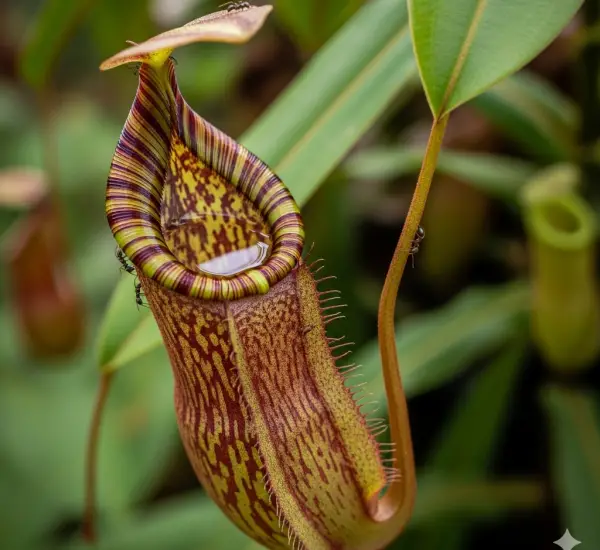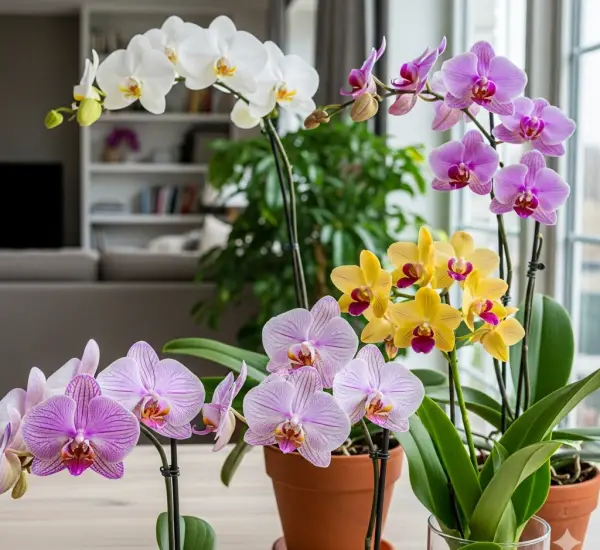The pitcher plant is a striking and unusual species, known for its unique tubular shape and carnivorous nature. Its fascinating structure has captured the imagination of people for centuries, making it not just a botanical curiosity but also a powerful symbol in various cultures. Beyond its visual intrigue, the pitcher plant embodies deep meanings, representing strength, luck, and balance. These symbolic associations make it a plant of both aesthetic and spiritual significance, celebrated in gardens, art, and cultural traditions worldwide.
Pitcher Plants and Strength
One of the most prominent symbolic qualities associated with the pitcher plant is strength. Unlike many delicate flowering plants, pitcher plants demonstrate resilience and adaptability in challenging environments. They often grow in nutrient-poor soil, relying on their specialized structure to capture insects and supplement their nourishment. This unique survival strategy represents resourcefulness and inner strength.
Symbolically, the pitcher plant is a reminder of the importance of adaptability and determination. Its ability to thrive despite harsh conditions teaches us that true strength comes from using what we have wisely and remaining steadfast in the face of challenges. In a metaphorical sense, the plant inspires resilience, courage, and the capacity to turn obstacles into opportunities.
In many cultures, pitcher plants have also been associated with protective strength. Their unusual form and self-sustaining nature suggest the ability to guard oneself, both physically and spiritually, while maintaining growth and vitality. Displaying or cultivating pitcher plants can symbolize empowerment and self-reliance, reinforcing the idea that strength comes not only from external resources but also from inner resolve.
Pitcher Plants as Symbols of Luck
The pitcher plant is also linked to luck and positive energy. In traditional folklore, plants with unusual or rare appearances are often considered auspicious, believed to attract good fortune and favorable circumstances. The pitcher plant’s striking form and rarity enhance its reputation as a symbol of luck.
In Feng Shui and other spiritual practices, pitcher plants are sometimes placed in homes or offices to invite abundance and opportunities. Their presence is thought to draw positive energy while discouraging stagnation or negativity. The idea is that just as the plant captures and transforms nutrients from its environment, it can similarly attract good fortune and beneficial influences into one’s life.
Pitcher plants are also popular as gifts, particularly for occasions celebrating new ventures, achievements, or milestones. Offering a pitcher plant symbolizes a wish for success and prosperity, making it an ideal present for entrepreneurs, graduates, or anyone embarking on a fresh journey. Its symbolic link to luck emphasizes the importance of timing, opportunity, and mindful cultivation of one’s environment.
Pitcher Plants and Balance
Balance is another essential aspect of the pitcher plant’s symbolism. Its life cycle and survival strategy reflect a delicate equilibrium between nature and necessity. By capturing insects for sustenance, the pitcher plant demonstrates the natural balance between giving and receiving, life and sustenance, and action and patience.
Symbolically, the pitcher plant reminds us of the importance of maintaining harmony in our own lives. Strength alone is not enough; true well-being comes from balancing effort with rest, ambition with contentment, and personal needs with the needs of others. Its unique structure encourages reflection on how we interact with our environment, urging us to find a harmonious balance between taking what we need and respecting the natural world.
In Feng Shui and spiritual symbolism, the pitcher plant’s balance is often connected to mental clarity and emotional stability. Having this plant in your living or work space can serve as a visual and energetic reminder to stay centered, make thoughtful decisions, and cultivate equilibrium in daily life.
Why the Pitcher Plant Endures as a Symbolic Plant
The symbolic significance of the pitcher plant endures because it combines visual uniqueness with profound life lessons. Its association with strength, luck, and balance reflects universal human aspirations: the desire to overcome challenges, attract opportunities, and maintain harmony in life. Unlike many ornamental plants, the pitcher plant’s symbolism is reinforced by its actual survival mechanisms, making it a living metaphor for resilience, mindfulness, and resourcefulness.
Its exotic appearance also contributes to its symbolic power. Rare and visually captivating plants naturally evoke curiosity and reverence, enhancing their association with fortune and spiritual energy. Whether admired for its form, cultivated for its uniqueness, or appreciated for its symbolism, the pitcher plant remains a meaningful presence in homes, gardens, and cultural narratives.
Conclusion
The pitcher plant is far more than an unusual carnivorous species—it is a living symbol of strength, luck, and balance. Its ability to thrive in challenging conditions embodies resilience, while its rarity and captivating form make it a harbinger of good fortune. The plant’s structure and survival strategy also serve as a reminder of the importance of balance in life, encouraging harmony between effort and reflection, giving and receiving, and action and patience.
By incorporating pitcher plants into gardens, homes, or personal spaces, individuals can connect with these symbolic qualities. Beyond their aesthetic appeal, pitcher plants inspire inner strength, attract positive energy, and remind us of the delicate balance necessary to live a fulfilling and harmonious life. Whether admired for beauty, gifted to a loved one, or used in spiritual practice, the pitcher plant stands as a timeless emblem of empowerment, opportunity, and equilibrium.



